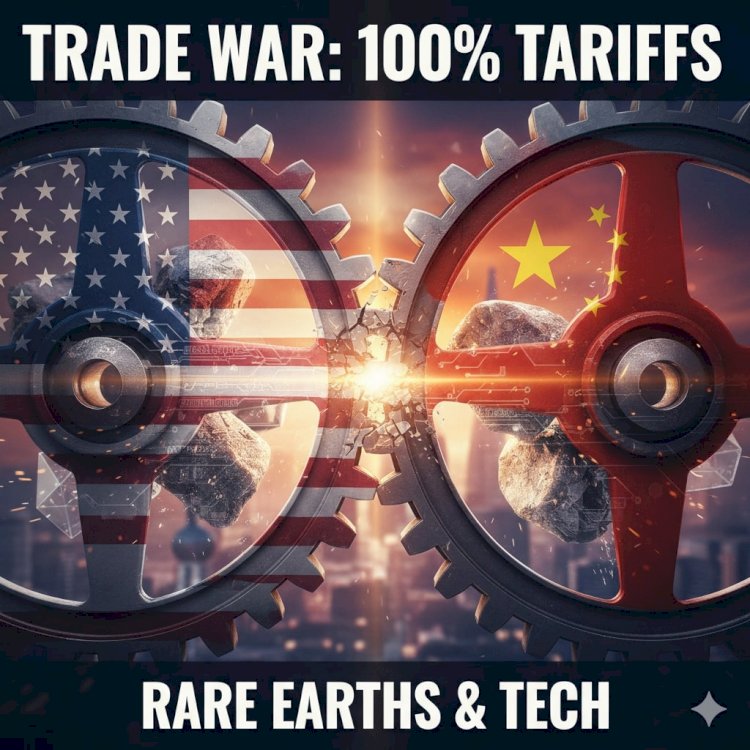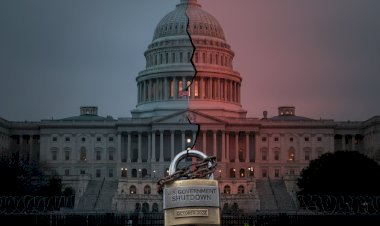Geopolitical Showdown: US Imposes 100% China Tariffs, Targeting Critical Minerals and Tech

WASHINGTON D.C. / BEIJING – The uneasy detente between the United States and China has dramatically shattered, with the US announcing a massive new wave of tariffs set to take effect on November 1, 2025. The punitive action, a direct counter to China's latest restrictions on critical material exports, signals a dangerous escalation in the economic and geopolitical conflict between the two superpowers.
US President Donald Trump declared that the US will impose an additional 100% tariff on all Chinese imports, an extraordinary duty that will be levied on top of existing tariffs. Furthermore, the administration will impose export controls on "any and all critical software" starting the same date.
The Rare Earths Chokehold
The core driver of the escalation is Beijing’s move to tighten its grip on rare earth elements and related processing technologies. Rare earths are 17 metallic elements essential for high-tech and defense manufacturing, including:
-
F-35 Fighter Jets and advanced missile systems.
-
Electric Vehicle motors and batteries.
-
Advanced Semiconductors and aerospace components.
China, which controls over 90% of the world's processed rare earth supply, recently expanded its export control list and introduced new rules requiring foreign companies to seek government approval for exports of magnets containing even trace amounts of Chinese-origin materials or technology. The Chinese Commerce Ministry justified the measure on "national security" grounds.
Market Reaction and Economic Forecast
Global markets reacted immediately and sharply to the news. On Friday, major US stock indices, including the S&P 500, saw significant declines, averaging a fall of over 2.5% as investors priced in the risk of a full-blown trade war.
Analysts warn that the combined effect of a near-doubling of import taxes, on top of existing duties, risks two major economic consequences for the US:
-
Inflationary Pressure: Prices for consumer electronics, toys, apparel, and vehicles are expected to soar as the high cost of tariffs is passed on to shoppers.
-
Stagflation Risk: The tariffs threaten to reduce GDP growth while simultaneously pushing up inflation, increasing the probability of the US economy tipping into a state of stagflation, a complex challenge for the Federal Reserve.
The tariffs are also expected to accelerate the multi-year trend of supply chain diversification. Nations like India are already seeing renewed interest from American buyers looking for alternative, tariff-exempt manufacturing partners in sectors like textiles and electronics.
Technology and Defense Implications
The US ban on "critical software" is a major escalation in the technology rivalry. Analysts suggest this broad control could severely impact China's advanced computing sectors, including cloud services and Artificial Intelligence development, potentially serving as a direct counter to China’s restrictions on raw materials.
Crucially, Beijing's new rare earth rules explicitly target foreign military users, indicating that the trade dispute is now inextricably linked to national security and defense capabilities. This shift from purely commercial disagreements to strategic resource denial marks a dangerous pivot in the US-China relationship.
Dialogue, already fraught, remains uncertain. The status of a planned meeting between President Trump and President Xi Jinping at the upcoming APEC summit in South Korea is now in question, leaving the global community to brace for a period of heightened economic and geopolitical tension.

 content-team
content-team 


















